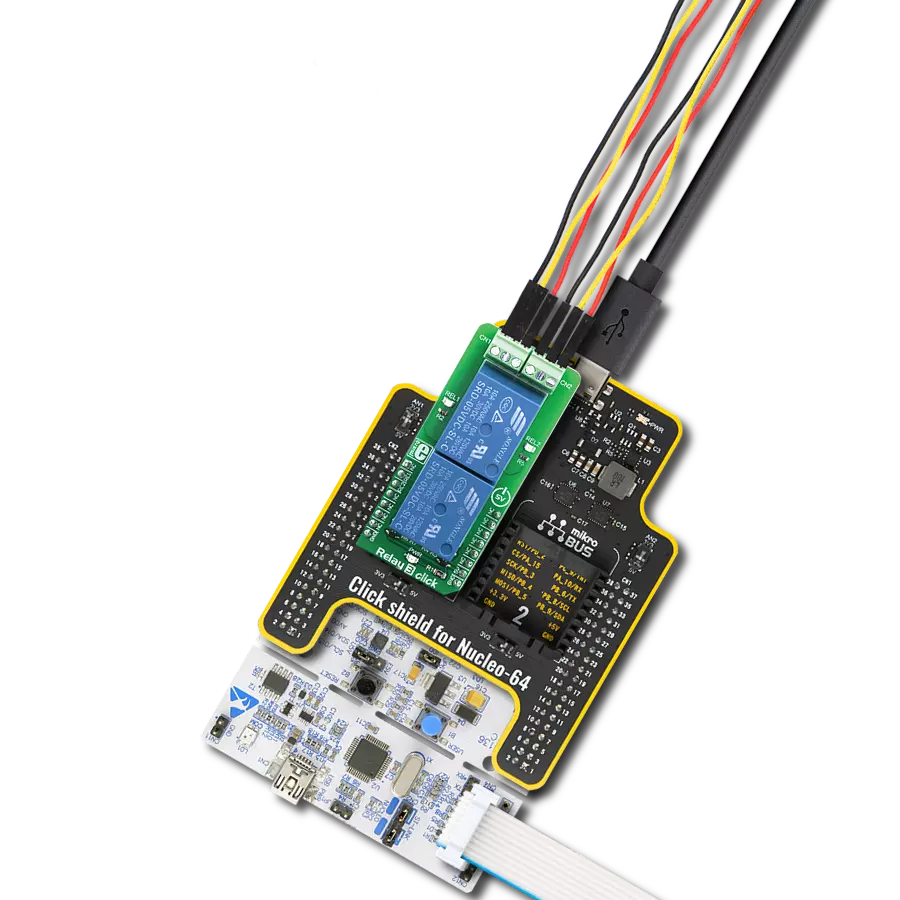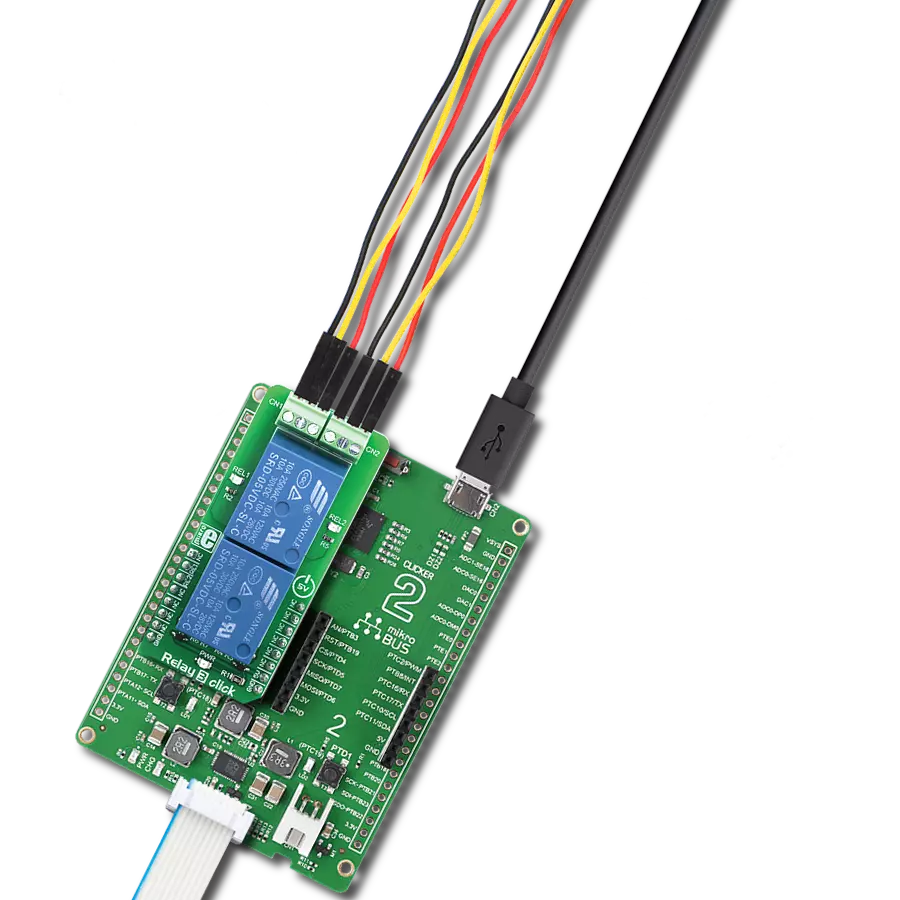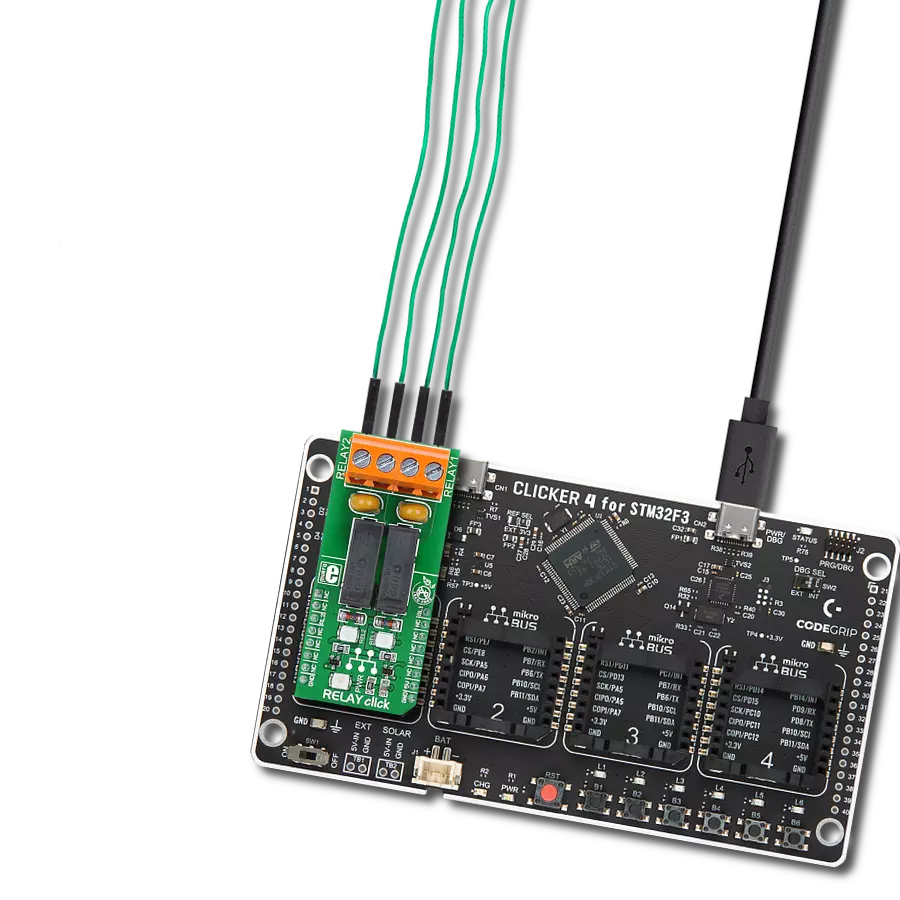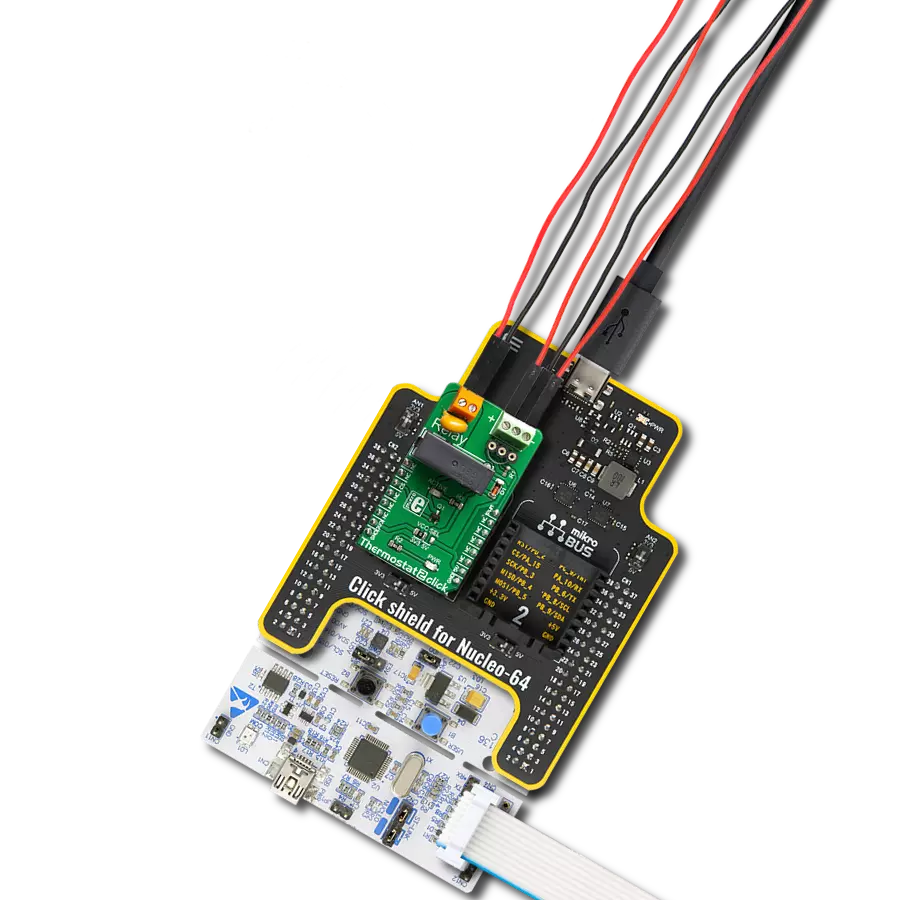Enrich industrial automation and applications requiring the control of resistive and inductive loads up to 50mH with a current capacity of 0.5A per channel
A
A
Hardware Overview
How does it work?
IPD Click - 2015 is based on the TPD2015FN, an 8-channel high-side switch featuring MOSFET outputs from Toshiba Semiconductor, designed to be directly driven by CMOS and TTL logic circuitry. It's ideally suited for driving inductive and resistive loads, such as industrial programmable logic controllers for industrial use, motors, relays, lamps in factory automation equipment, and more. A key advantage of the TPD2015FN is its built-in overcurrent and overtemperature protection, enhancing system stability by safeguarding against excessive heat and current. Equipped with the capability to handle back electromotive force from inductive loads without surpassing the component's voltage tolerance, the TPD2015FN is optimized for loads up to 50mH with a current capacity of 0.5A per channel, supported by an external power supply ranging from 8-24V. The channels can be
operated in parallel to increase the current capability of the outputs. As mentioned, this Click board™ incorporates comprehensive protection mechanisms, including overtemperature protection that deactivates all outputs (OUT1-OUT8) if the temperature exceeds 175°C and overcurrent protection that limits voltage and current during load shorts, ensuring the device and its connected peripheral safety. Designed for straightforward integration with CMOS and TTL systems, the IPD Click features input control terminals for each output channel, allowing independent channel control. Inputs IN1 to IN4 interface directly via the mikroBUS™ socket, with additional inputs IN5 to IN8 accessible through an unpopulated header. Each input control pin of the TPD2015FN is equipped with a built-in 300kΩ pull-down resistor to maintain a LOW logic state in an open state. This
Click board™ comes with optional inductive load decoupling diodes unpopulated by default, the CRS20140A from Toshiba Semiconductor, allowing users to add them in the case of higher inductive loads. Also, it is equipped with jumpers for the diode configuration of the used load switch and its power management. These jumpers are pre-configured, enabling immediate use without the need for any adjustments. This Click board™ can operate with either 3.3V or 5V logic voltage levels selected via the VCC SEL jumper. This way, both 3.3V and 5V capable MCUs can use the communication lines properly. Also, this Click board™ comes equipped with a library containing easy-to-use functions and an example code that can be used as a reference for further development.
Features overview
Development board
Curiosity PIC32 MZ EF development board is a fully integrated 32-bit development platform featuring the high-performance PIC32MZ EF Series (PIC32MZ2048EFM) that has a 2MB Flash, 512KB RAM, integrated FPU, Crypto accelerator, and excellent connectivity options. It includes an integrated programmer and debugger, requiring no additional hardware. Users can expand
functionality through MIKROE mikroBUS™ Click™ adapter boards, add Ethernet connectivity with the Microchip PHY daughter board, add WiFi connectivity capability using the Microchip expansions boards, and add audio input and output capability with Microchip audio daughter boards. These boards are fully integrated into PIC32’s powerful software framework, MPLAB Harmony,
which provides a flexible and modular interface to application development a rich set of inter-operable software stacks (TCP-IP, USB), and easy-to-use features. The Curiosity PIC32 MZ EF development board offers expansion capabilities making it an excellent choice for a rapid prototyping board in Connectivity, IOT, and general-purpose applications.
Microcontroller Overview
MCU Card / MCU
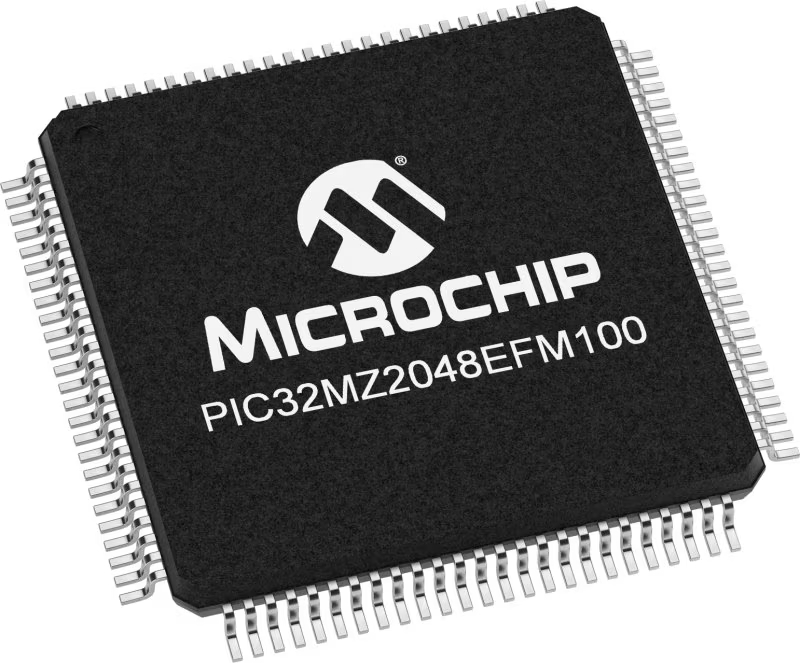
Architecture
PIC32
MCU Memory (KB)
2048
Silicon Vendor
Microchip
Pin count
100
RAM (Bytes)
524288
Used MCU Pins
mikroBUS™ mapper
Take a closer look
Click board™ Schematic

Step by step
Project assembly
Software Support
Library Description
This library contains API for IPD Click - 2015 driver.
Key functions:
ipd2015_all_pins_set- IPD 2015 pin setting functionipd2015_set_out_level- IPD 2015 set output level functionipd2015_get_out_state- IPD 2015 get output level function
Open Source
Code example
The complete application code and a ready-to-use project are available through the NECTO Studio Package Manager for direct installation in the NECTO Studio. The application code can also be found on the MIKROE GitHub account.
/*!
* @file main.c
* @brief IPD 2015 Click Example.
*
* # Description
* This example demonstrates the use of IPD 2015 Click board by toggling the output state.
*
* The demo application is composed of two sections :
*
* ## Application Init
* Initializes the driver and logger.
*
* ## Application Task
* Switches on all output pins state for 2 seconds, then switches them off, and turns them on one by one.
*
* @author Stefan Ilic
*
*/
#include "board.h"
#include "log.h"
#include "ipd2015.h"
static ipd2015_t ipd2015; /**< IPD 2015 Click driver object. */
static log_t logger; /**< Logger object. */
void application_init ( void )
{
log_cfg_t log_cfg; /**< Logger config object. */
ipd2015_cfg_t ipd2015_cfg; /**< Click config object. */
/**
* Logger initialization.
* Default baud rate: 115200
* Default log level: LOG_LEVEL_DEBUG
* @note If USB_UART_RX and USB_UART_TX
* are defined as HAL_PIN_NC, you will
* need to define them manually for log to work.
* See @b LOG_MAP_USB_UART macro definition for detailed explanation.
*/
LOG_MAP_USB_UART( log_cfg );
log_init( &logger, &log_cfg );
log_info( &logger, " Application Init " );
// Click initialization.
ipd2015_cfg_setup( &ipd2015_cfg );
IPD2015_MAP_MIKROBUS( ipd2015_cfg, MIKROBUS_1 );
if ( DIGITAL_OUT_UNSUPPORTED_PIN == ipd2015_init( &ipd2015, &ipd2015_cfg ) )
{
log_error( &logger, " Communication init." );
for ( ; ; );
}
log_info( &logger, " Application Task " );
}
void application_task ( void )
{
log_printf( &logger, " Turning OUT 1 to OUT 4 HIGH \r\n" );
ipd2015_all_pins_set( &ipd2015 );
Delay_ms ( 1000 );
Delay_ms ( 1000 );
log_printf( &logger, " Turning OUT 1 to OUT 4 LOW \r\n" );
ipd2015_all_pins_clear( &ipd2015 );
Delay_ms ( 1000 );
Delay_ms ( 1000 );
log_printf( &logger, " Turning OUT 1 to OUT 4 one by one \r\n" );
uint8_t out_sel = IPD2015_OUT1_PIN_MASK;
do
{
ipd2015_set_out_level( &ipd2015, out_sel, IPD2015_PIN_STATE_HIGH );
Delay_ms ( 1000 );
Delay_ms ( 1000 );
ipd2015_set_out_level( &ipd2015, out_sel, IPD2015_PIN_STATE_LOW );
out_sel <<= 1;
}
while ( out_sel <= IPD2015_OUT4_PIN_MASK );
}
int main ( void )
{
/* Do not remove this line or clock might not be set correctly. */
#ifdef PREINIT_SUPPORTED
preinit();
#endif
application_init( );
for ( ; ; )
{
application_task( );
}
return 0;
}
// ------------------------------------------------------------------------ END
Additional Support
Resources
Category:Relay




















